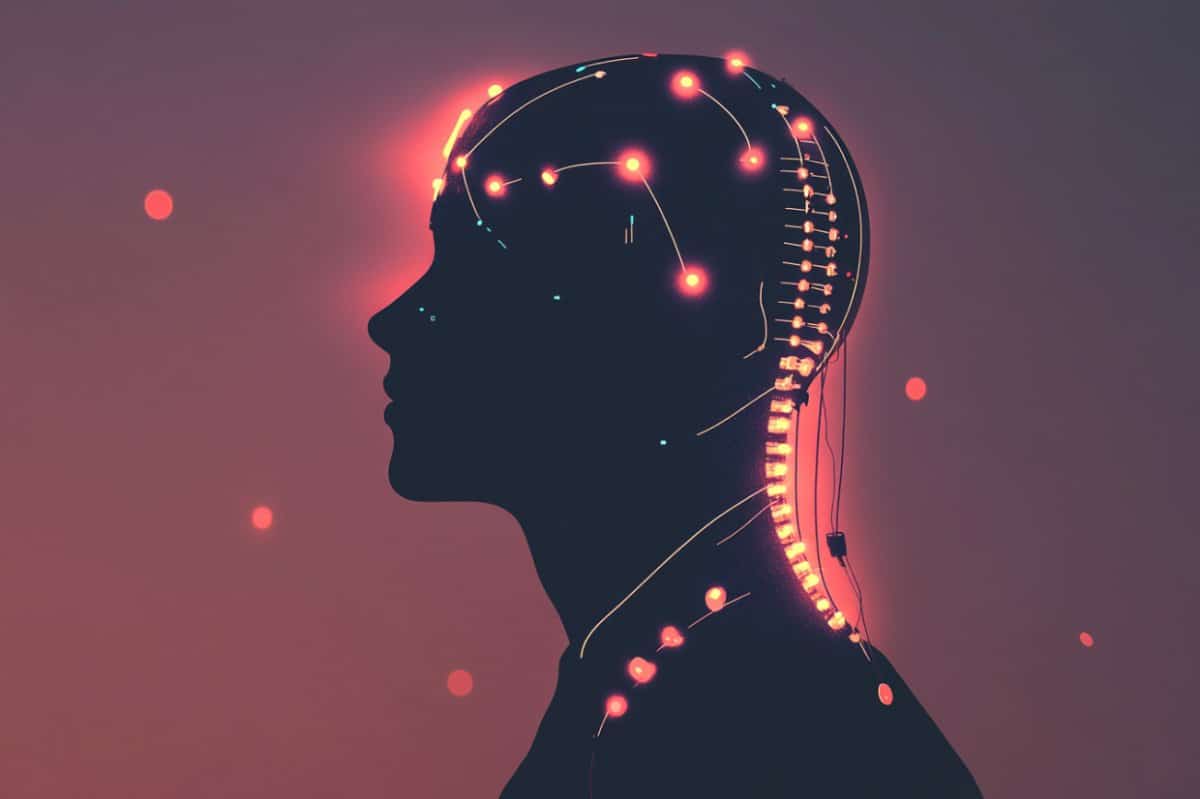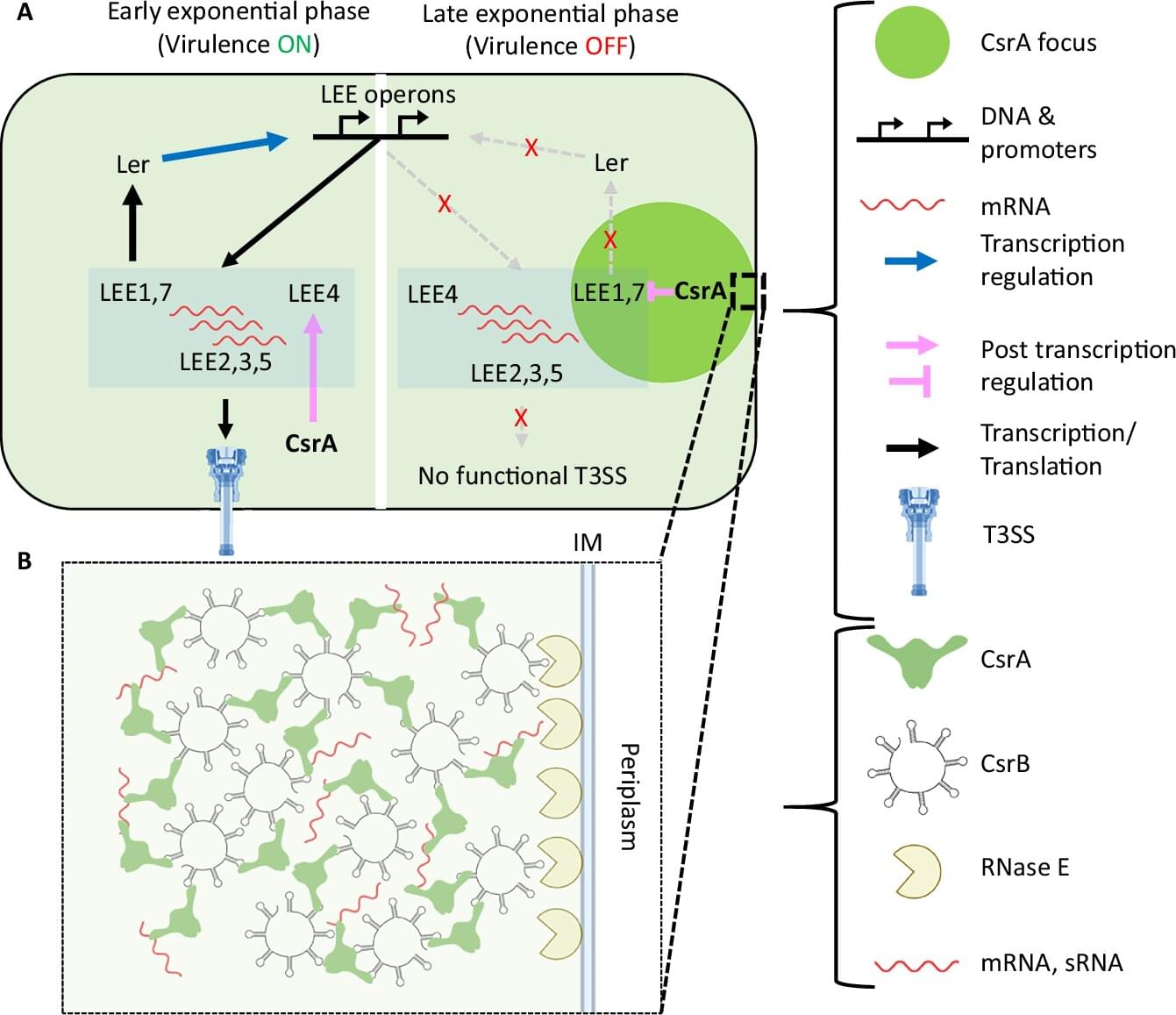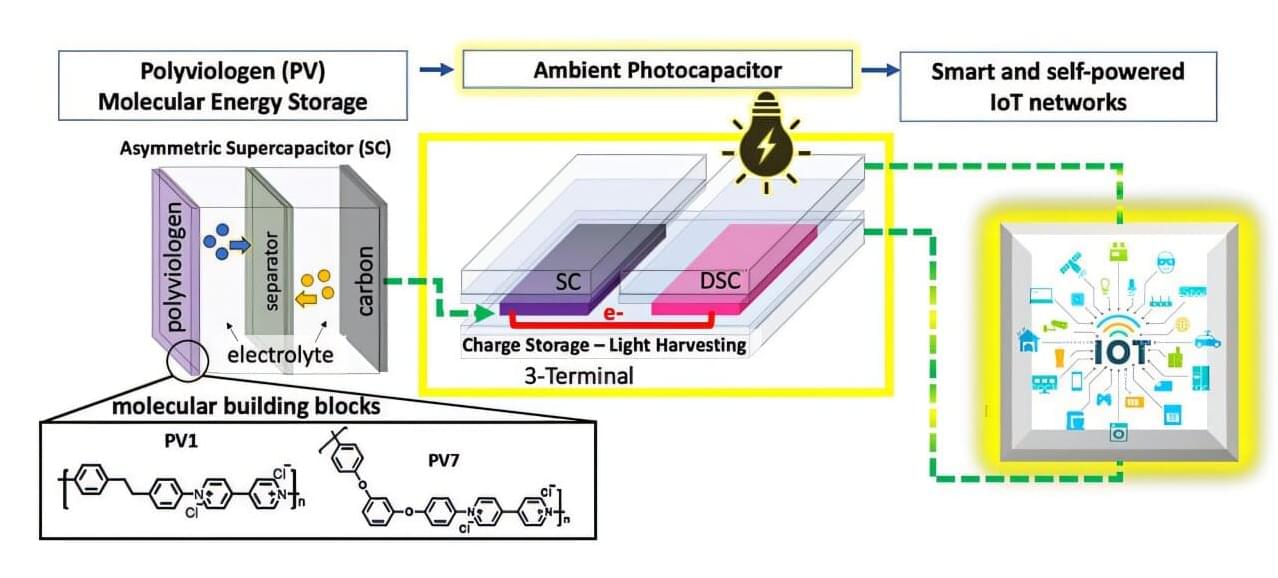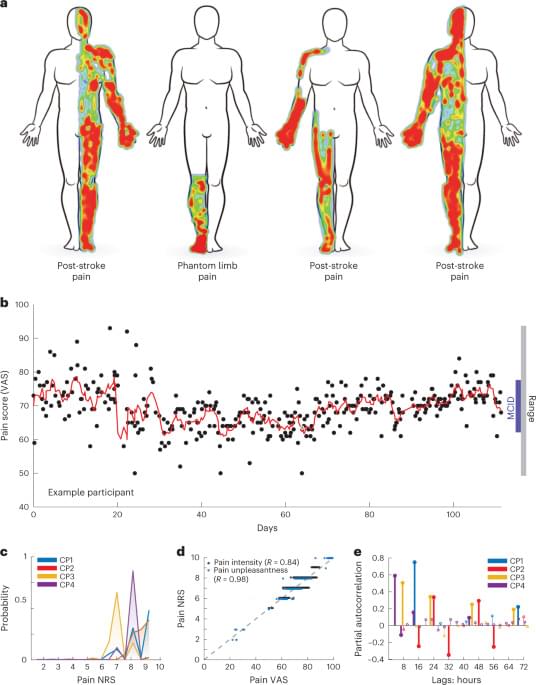Researchers have developed a noninvasive brain-spine interface that detects movement intentions and cues spinal cord stimulation to aid rehabilitation.
Scientists at the Hebrew University of Jerusalem have uncovered a surprising way in which harmful bacteria prepare to attack their hosts. The discovery, led by Ph.D. students Lior Aroeti, Netanel Elbaz under the guidance of Prof. Ilan Rosenshine from the Faculty of Medicine could one day help researchers find new ways to fight infectious diseases.
At the heart of this study, now published in Nature Communications, is a protein called CsrA, which acts like a switchboard operator inside bacterial cells. It helps bacteria decide which of their genes to turn on or off—especially the genes that make them dangerous to humans.
Researchers have long known that CsrA plays a central role in bacterial virulence—the ability of bacteria to cause disease. But the new study shows that CsrA doesn’t work alone. Instead, it gathers in a special, droplet-like structure inside the cell. This structure has no membrane, making it a “membraneless compartment,” which scientists now believe is crucial in regulating how bacteria behave.
The weird paradox of Schrödinger’s cat has found a lasting popularity. What does it mean for the future of quantum physics?
Michael Elowitz on the early years of synthetic biology and the programmability of living cells.
A landmark international collaboration led by Newcastle University has developed the world’s most efficient integrated light-harvesting and storage system for powering autonomous Artificial Intelligence (AI) at the edge of the Internet of Things (IoT).
Firefly Aerospace’s Alpha #FLTA006 “Message in a Booster” mission — initially scheduled to go on March 15 from Space Launch Complex 2 — now is slated to blast off Sunday
While antibiotics given in the first week of life reduce vaccine responses at 15 months, probiotics might counteract these effects.
Featuring LumaFusion, Waldorf Nave, In-Shot, Moodscaper, MultitrackDAW. I used In-Shot to assemble still collages and then imported them into LumaFusion with subtle zooming. I used some of the new LumaFusion transitions between these still images. I recorded Waldorf Nave and Moodscaper clips into MultitrackDAW and then exported them into LumaFusion for final blending and mastering.
I was going for a post-human world where the singularity has been achieved and humanoids benefit from the merger and constant stimulus of a fully integrated, technical, digital audio and visual experience. This experience can be named as Utopia, Xanadu or Heterotopia and, while I prefer the latter word, “heterotopia” is perhaps a little too obscure of a title. So, for the title I chose the spelling “PROJEKT” to indicate the scientific, technical feeling; and “HUMANOID” to indicate a better version of humankind; and “2050” as a nod to Bladerunner 2049, as well as a nod to the next generation of humanity. May it solve the problems that we are confronting today.
I hope you enjoy watching and listening!
Peace!
Tom.
Using the chronic brain recordings in the anterior cingulate cortex and orbitofrontal cortex in four participants with intractable chronic pain, this study identified objective neural biomarkers of subjective pain experience.
A ready-made version of a cutting-edge cancer immunotherapy can effectively defeat blood cancers, a new study says.
Researchers have prepared an off-the-shelf version of CAR immune cell treatment that can be administered more easily to patients with blood cancers.
The new treatment, which uses a type of immune cell called natural killer cells, promoted complete remission in several patients with acute myeloid leukemia (AML), researchers said in a presentation at an American Association for Cancer Research’s (AACR) meeting in Chicago.









